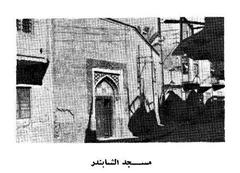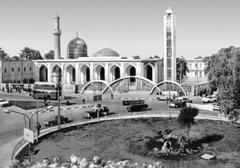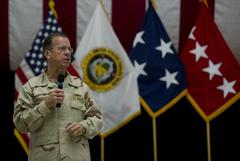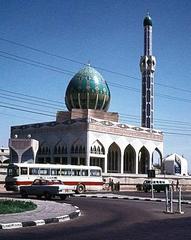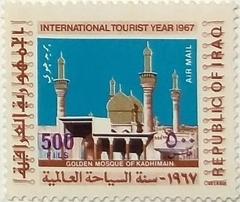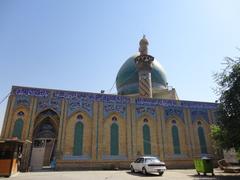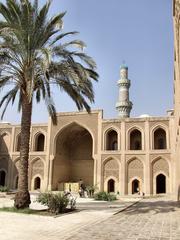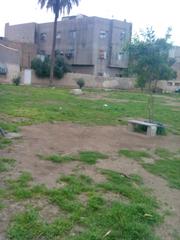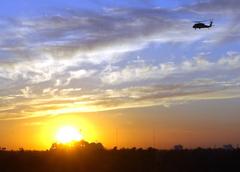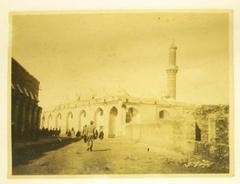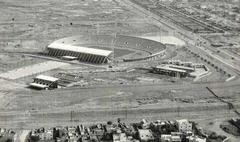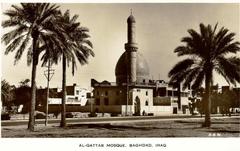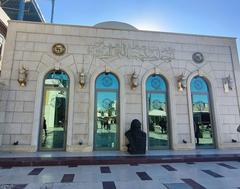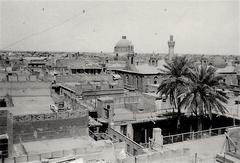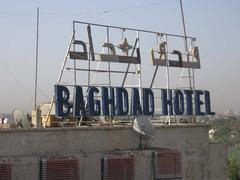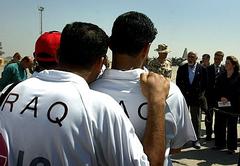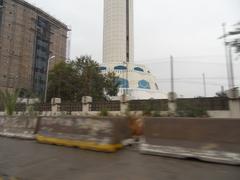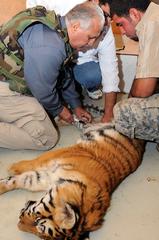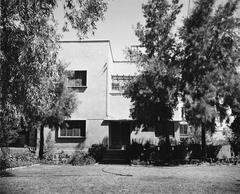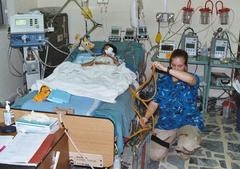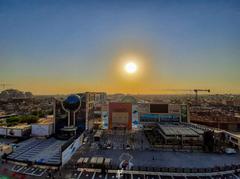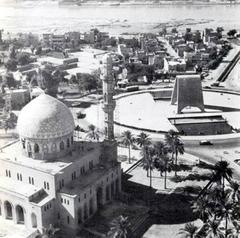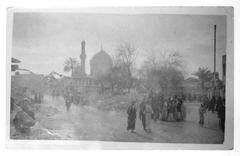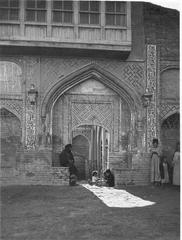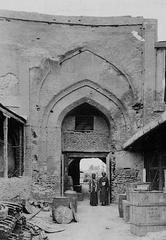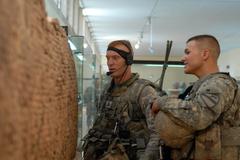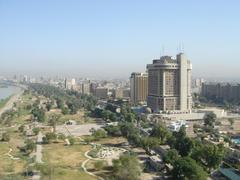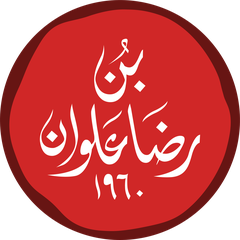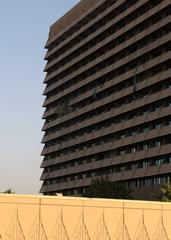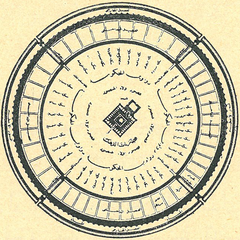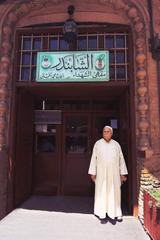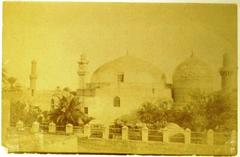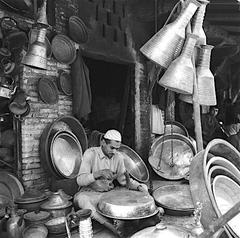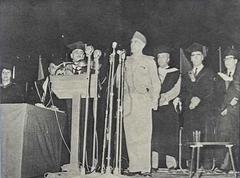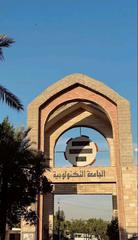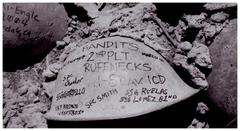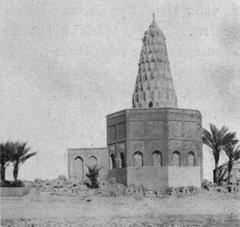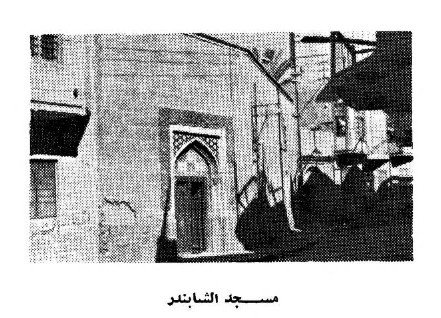
Shabandar Mosque Visiting Hours, Tickets, and Historical Significance in Baghdad
Date: 14/06/2025
Introduction
Shabandar Mosque, located in the historic al-Adhamiyah district of Baghdad, stands as an enduring emblem of early 20th-century Iraqi religious architecture and community philanthropy. Built in 1902 by Mahmoud Ibrahim al-Shabandar, a member of a prominent merchant family, the mosque not only serves as a place of worship but also as a testament to Baghdad’s layered cultural heritage and the philanthropic spirit of its founding family. Its position within a traditional neighborhood reflects a unique blend of Ottoman urban planning and Iraqi architectural aesthetics. This guide presents the mosque’s historical context, architectural features, social significance, and practical visitor information—including hours, accessibility, etiquette, and travel tips—to help you plan a respectful and insightful visit. Whether you are interested in religious heritage, architecture, or cultural immersion, Shabandar Mosque provides a meaningful experience within Baghdad’s historical landscape (Wikiwand; Britannica).
Table of Contents
- Location and Setting
- Historical Context and Patronage
- Architectural Style and Features
- Community and Social Role
- Renovation and Preservation
- Visiting Shabandar Mosque: Practical Information
- Frequently Asked Questions (FAQ)
- Conclusion
- References and Further Reading
Location and Setting
Shabandar Mosque is situated in Baghdad’s al-Adhamiyah district, an area noted for its historical and architectural richness. The mosque’s location—close to the Tigris River and nestled within residential streets—exemplifies late Ottoman urban planning, where religious, residential, and charitable spaces are closely integrated (Wikiwand).
Historical Context and Patronage
Constructed in 1902 by Mahmoud Ibrahim al-Shabandar, the mosque is a product of the Shabandar merchant family’s dedication to both religious life and social welfare. The family’s ongoing commitment to the mosque’s upkeep, despite the absence of a formal endowment (waqf), highlights the tradition of private philanthropy in Baghdad’s history (Wikiwand).
Architectural Style and Features
Exterior Design
Reflecting a fusion of late Ottoman and early 20th-century Iraqi styles, the mosque is built from traditional brick and mortar. The façade is modest and welcoming, with clean lines and minimal ornamentation, emphasizing accessibility and community focus over monumental grandeur (Britannica).
Courtyard and Garden
A tranquil garden surrounds the mosque, serving both as a peaceful retreat and as the Shabandar family’s private cemetery. The founder’s grave is discreetly situated here, following a traditional practice of integrating burial spaces within mosque grounds to reflect close family and community ties (Wikiwand).
Interior Layout
Main Prayer Hall
The main prayer hall accommodates around 140 worshippers in a 300-square-meter space. Oriented toward Mecca, the hall features an open layout with carpeted floors and minimal decoration, fostering an atmosphere focused on spiritual reflection.
Summer Musalla
Designed for Baghdad’s hot summers, the semi-open musalla (prayer space) near the courtyard accommodates approximately 50 worshippers and benefits from garden shade and ventilation.
Residential Quarters
In keeping with its philanthropic mission, the mosque houses modest residential quarters for the needy, providing shelter and essentials as part of its ongoing social role.
Basement
A small basement is used for storage or utilities—a unique feature in Baghdad due to the high water table (Wikiwand).
Decorative Elements
The mosque is characterized by traditional latticed windows, which provide privacy and ventilation, as well as simple displays of historical photographs commemorating the Shabandar family’s role. Ornamentation is restrained, with a focus on function and community service (Britannica).
Community and Social Role
Shabandar Mosque’s design and function reflect a broader tradition in Baghdad, where places of worship also serve as centers for social welfare. The inclusion of residential quarters for the needy and the private family cemetery underscores the mosque’s role in community support and its enduring connection to the Shabandar lineage (Wikiwand).
Renovation and Preservation
The mosque underwent significant renovations in 1938 to preserve its structure and adapt to evolving community needs. Maintenance remains privately funded by the Shabandar family, particularly by Sayyid Sa’eed Ibrahim al-Shabandar, ensuring the mosque’s continued operation and historical integrity (Wikiwand).
Visiting Shabandar Mosque: Practical Information
Visiting Hours
The mosque is generally open daily from early morning until sunset, accommodating the five daily prayers. Non-Muslim visitors are welcome outside prayer times but should avoid visiting during Friday midday (Jumu’ah) prayers and Islamic holidays to respect religious practices and avoid crowds (Wikipedia).
Tickets and Entry
Admission to Shabandar Mosque is free, and no tickets are required. Donations for upkeep are appreciated, as the mosque is privately funded (Wikipedia).
Dress Code and Etiquette
- Dress modestly: men should wear long trousers and sleeved shirts; women should wear long skirts or trousers, sleeved tops, and a headscarf.
- Remove shoes before entering the prayer hall.
- Maintain quiet and respectful behavior inside the mosque.
- Photography is generally allowed outside prayer times, but always seek permission before photographing worshippers or staff.
- Respect gender segregation if present and follow the guidance of mosque staff (Travel Like a Boss).
Accessibility
The mosque’s traditional architecture may pose challenges for visitors with mobility issues, as there are no ramps or elevators. Some areas, like the private cemetery and residential quarters, are restricted to preserve privacy and sanctity.
Nearby Attractions
- Al-Mutanabbi Street: Famous for its book market and the historic Shabandar Café.
- Al-Kadhimiyya Mosque: A significant Shia shrine (strict dress code applies).
- Souk Al-Safafeer: Traditional copper market and a showcase of local craftsmanship (Laure Wanders; Scoop Empire).
Travel Tips
- Visit in spring or autumn for comfortable weather.
- Arrange transportation in advance; taxis and ride-hailing apps are recommended.
- Avoid visiting during religious holidays or prayer times.
- Leave a small donation if possible to support the mosque’s maintenance.
- Learn basic Arabic greetings to enhance your interaction with locals.
- Respect local customs and avoid sensitive topics unless invited to discuss them (Man vs Clock).
Frequently Asked Questions (FAQ)
Q: What are the visiting hours for Shabandar Mosque?
A: The mosque is open for the five daily prayers; non-Muslim visitors should come outside prayer times and avoid Fridays and holidays.
Q: Is there an entrance fee or ticket required?
A: No, admission is free. Donations are appreciated.
Q: Can non-Muslims visit Shabandar Mosque?
A: Yes, outside of prayer times and by respecting mosque rules.
Q: Are guided tours available?
A: No official tours, but local guides can be arranged.
Q: Is the mosque accessible for visitors with disabilities?
A: Accessibility is limited due to traditional design; inquire locally for assistance.
Q: Can I take photographs inside the mosque?
A: Yes, but only outside of prayer times and with permission.
Conclusion
Shabandar Mosque is a living testament to Baghdad’s spiritual, architectural, and philanthropic heritage. Its modest yet beautiful design, ongoing role in community support, and preservation by the Shabandar family make it a must-visit destination for those seeking to understand the city’s cultural roots. By observing local customs, dress codes, and etiquette, visitors can ensure a meaningful and respectful experience. For up-to-date information, guided tours, and cultural insights, download the Audiala app and follow trusted local sources to enhance your journey through Baghdad’s historical sites.
References and Further Reading
- Shabandar Mosque article, Wikiwand, 2025
- Baghdad Architecture and Monuments, Britannica, 2025
- Travel Like a Boss
- Beyond the Bucket List
- Man vs Clock
- Laure Wanders
- Scoop Empire
Image Suggestions:
- Exterior view of Shabandar Mosque with clear signage (alt: “Shabandar Mosque facade in Baghdad”)
- Interior prayer hall showing architectural details (alt: “Inside Shabandar Mosque prayer hall”)
- Map of Baghdad highlighting Shabandar Mosque location
Internal Links:
